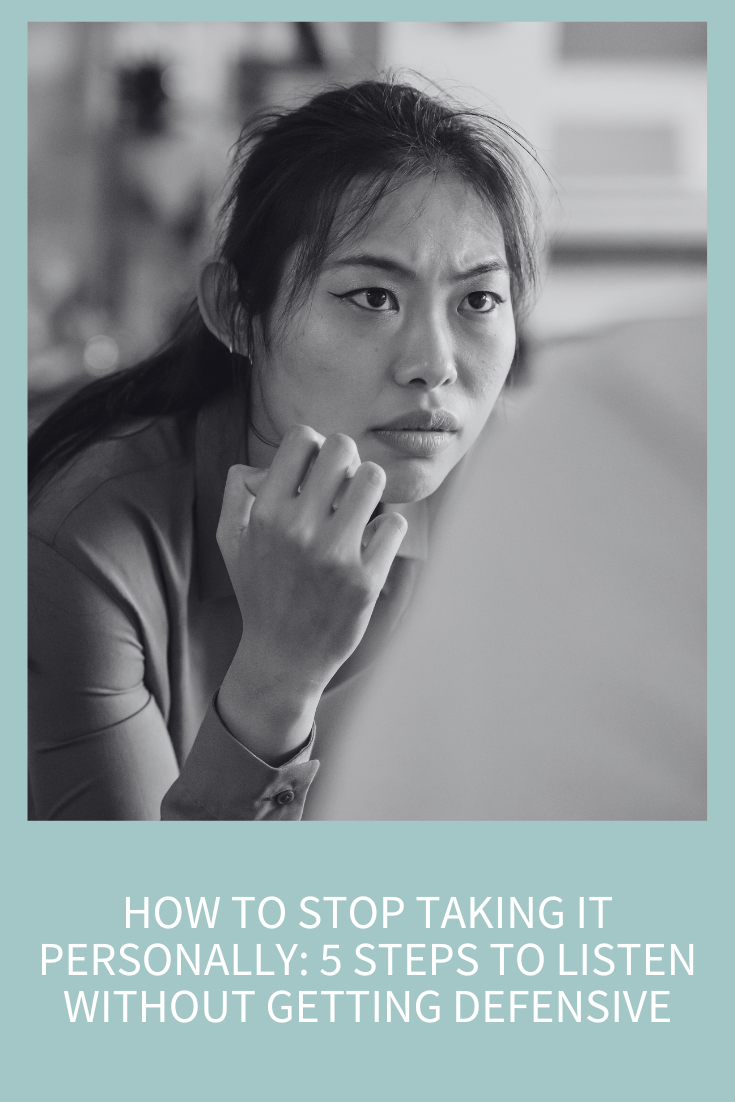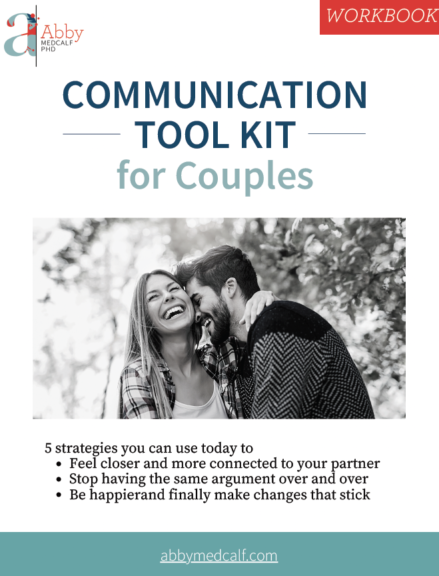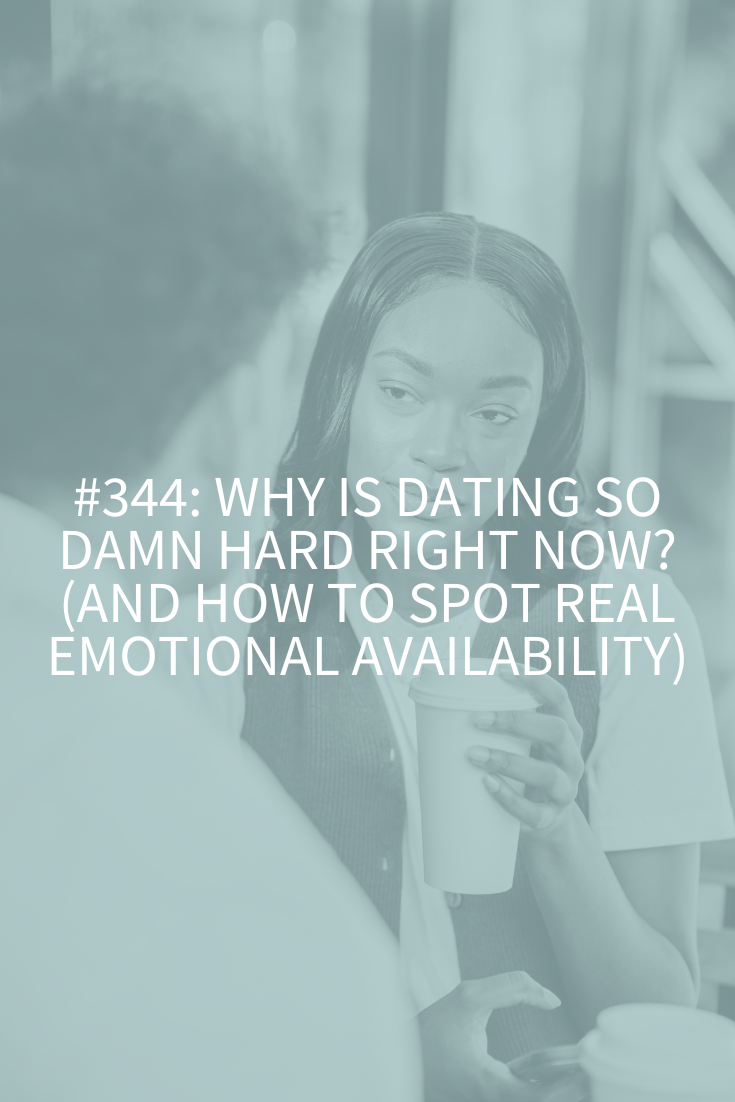
It’s not hard to stay calm and open when someone is complimenting your outfit or thanking you for dinner. But when they’re disappointed in you? Hurt by something you said? Frustrated by a mistake you made? That’s when your brain shifts into protect mode. And suddenly, instead of listening, you’re defending, explaining, or withdrawing. Defensiveness is one of the biggest barriers to connection, whether it’s with your partner, your boss, your best friend, or your teenager. But if you can learn to manage your internal response to criticism, or even perceived criticism, you can show up differently in every relationship you care about. Today we’ll talk about why you get defensive; you’ll be able to take a quiz to identify your defense style and, of course, I’ll share my five steps to listen without getting defensive.
8-minute read
Why We Get Defensive (and Why It’s Not Your Fault)
You’re in a conversation. Someone says something that stings. You feel your chest tighten, your jaw clench, and before you can stop yourself, you’re saying, “That’s not what I meant!” or “Why are you coming at me like this?”
That, right there, is defensiveness. And it’s a hardwired human response.
Defensiveness is what we psychologists call a self-protective mechanism. It’s your brain’s way of guarding against threats, especially to your identity, sense of worth, or sense of safety. When someone gives you feedback (even lovingly), your nervous system can interpret it as a threat to your ego, which activates your stress response: fight, flight, freeze, or fawn.
In other words, your brain reacts to emotional discomfort like it’s a bear attack. And while that response might have helped our ancestors dodge saber-toothed tigers, it’s not exactly helpful when your partner’s asking you to please load the dishwasher differently (the correct way is with the fork tines up, by the way).
How Defensiveness Shows Up
Defensiveness isn’t just one thing. It wears different outfits depending on the person and the situation. Common signs include:
- Interrupting to explain or justify
- Dismissing or denying the other person’s experience
- Shifting blame or flipping the topic back to them
- Getting sarcastic or passive-aggressive
- Shutting down emotionally or physically leaving the conversation
- Replaying the argument in your head, building your “case”
Research shows that defensiveness often comes from low self-esteem, shame, or unresolved attachment wounds, and it tends to spike when people feel criticized or judged, especially if they’re already emotionally flooded.
Attachment Styles and Defensive Patterns
Yes, your attachment style can influence your default defensive pattern. While this area of research is still evolving, here’s what we know so far:
- Anxiously attached people tend to take things very personally. They might become hyper-vigilant for signs of rejection and react with over-explaining, pleasing, or emotional outbursts. Defensiveness in this style often looks like protest or panic: “You’re mad at me, aren’t you?”
- Avoidantly attached folks are more likely to emotionally shut down or dismiss the conversation entirely. Their defensiveness often shows up as stonewalling, minimizing, or acting like they “don’t care.”
- Disorganized attachment (a mix of anxious and avoidant) may react chaotically, flipping between angry defensiveness and self-blame, unsure whether to run or fix.
Knowing your attachment style isn’t a life sentence, it’s a roadmap. When you understand your wiring, you can pause the auto-response and choose something healthier.
Defensiveness is natural. It’s biological. But it’s not inevitable. The goal isn’t to never feel defensive; it’s to notice it and choose a more grounded response. Once you understand what’s happening in your brain and body, you can stop reacting and start relating.
I’ve got a great giveaway for you today! It’s the What’s Your Defense Style? Quiz. In it, I outline the four most common defense styles:
- The Explainer: You over-clarify to avoid being misunderstood or misrepresented.
- The Denier: You minimize or dismiss emotional feedback to stay in control.
- The Flipper: You redirect the focus back on the other person to avoid feeling vulnerable.
- The Martyr: You absorb blame or shut down to keep the peace and avoid conflict.
You can take the quiz to find out where you fit so you can better equip yourself to be more open and less defensive.
Now let’s talk about the five steps to actually listen when someone is upset, without taking it personally or losing yourself in the process.
Step One: Get Your Mind Right
This is where most people fail before they even open their mouths. If you walk into the conversation thinking, “This is going to suck,” your nervous system is going to follow your lead. Your body will brace for impact, your brain will go into survival mode, and you’ll start preparing your defense instead of listening.
Instead, take a minute to prepare yourself emotionally. Before the conversation starts, ask:
- “What kind of person do I want to be in this exchange?”
- “What outcome would feel good to both of us?”
- “How can I stay curious instead of combative?”
Then set a clear intention, out loud if you can:
- “It’s my intention to listen with an open heart.”
- “It’s my intention to understand, not defend.”
- “It’s my intention that we both walk away feeling closer and more connected.”
Why this works: You’re activating your Reticular Activating System (RAS), the part of your brain that filters incoming data. If your RAS is focused on connection and calm, you’ll be more likely to notice cues that support that experience. You’ll literally change how you perceive what’s being said. Preparation isn’t just about planning what to say; it’s also about planning how to say it. It’s about choosing how to be.
Step Two: Choose the Right Moment
Hard conversations need good timing. That means not squeezing them in on the way out the door or as a “by the way” after dinner. Ask, “Is now a good time?” If not, schedule it. Respect the emotional bandwidth needed to have a productive exchange. Pick a time and place where you both feel safe and centered. This isn’t about being precious, it’s about setting yourselves up to actually connect instead of combust.
And if something starts off casual but suddenly gets heated, hit pause. Say, “I want to give this the attention it deserves. Can we set aside time to really talk it through?” This isn’t avoidance. It’s maturity.
Step Three: Be Curious, Not Correct
When someone comes to you with feedback, it’s easy to go straight into explaining or justifying. But connection doesn’t come from being right. It comes from being curious.
Your internal dialogue should sound like:
- “That’s not how I saw it, but I want to understand how it felt to them.”
- “What’s underneath this? What are they really trying to express?”
- “This isn’t about proving my point, it’s about building trust.”
Ask clarifying questions from a place of genuine interest:
- “Can you tell me more about what you meant?”
- “What did you need in that moment that you didn’t get?”
- “What would have helped you feel more supported?”
And when you reflect back what you’ve heard, say:
- “What I’m hearing is…”
- “It sounds like you felt…”
- “I didn’t realize that landed that way. Thanks for telling me.”
Remember not to SAC. Don’t offer Suggestions, give Advice, or Criticize. Your job here isn’t to fix. It’s to understand.
Step Four: Stay Grounded, Not Guarded
Even with the best intentions, your body may still react. That’s normal.
Watch for the signs:
- Shoulders creeping up to your ears?
- Breath getting shallow?
- Heart rate climbing?
- Jaw getting tight?
- Are your arms or legs crossed?
These are your cues to pause. Take a slow breath. Drop your shoulders. Stay present. Defensiveness is a fear response. It tells you something important, usually that you’re feeling unseen, misunderstood, or ashamed. That’s not a cue to attack or withdraw. It’s a cue to regulate.
You can even name it out loud:
- “I’m feeling defensive right now, and I want to stay open.”
- “I’m noticing I’m getting reactive. Can we take a five-minute break so I can come back grounded?”
Self-awareness is your superpower here. And no matter what the other person says or how they say it, take responsibility for your side of the street. That doesn’t mean blaming yourself. It means owning your impact and your response. You co-create every dynamic you’re in. When you own your part, you reclaim your power.
Step Five: Tune In to Your Triggers
You don’t just “get defensive.” You have a defensiveness style, a habitual way you protect yourself when you feel under attack. And if you don’t know what it is, it’ll keep running the show.
Here are a few common ones:
- The Explainer: “I didn’t mean it like that!” (intent over impact)
- The Denier: “That’s not true!” (rejects the other person’s experience)
- The Flipper: “What about when you did this?” (deflects responsibility)
- The Martyr: “I guess I can’t do anything right.” (withdraws into shame)
Which one is your go-to?
According to John Gottman’s research, defensiveness is one of the Four Horsemen of relationship breakdown. But awareness is everything. Once you name your pattern, you can start to pause it.
When you feel triggered, ask:
- “What’s the story I’m telling myself right now?”
- “Where have I felt this before?”
- “What’s a more helpful interpretation of what’s happening?”
This isn’t about never getting triggered. It’s about knowing what to do when you are. And I hope it goes without saying at this point that if you’re not practicing mindfulness as the building block of your life, you won’t be able to consistently do any of these five steps. So, make sure you’re practicing mindfulness daily!
Wrap Up
Listening without getting defensive doesn’t mean being a doormat. It means being strong enough to stay open. When you build the muscle of staying calm and connected, even when it’s uncomfortable, you unlock a whole new level of intimacy, whether it’s in your romantic relationship, your work life, or your friendships.
You get to be the person who can handle hard things with grace. And that’s a superpower worth practicing.
For the One Love Collective Community
Tier I:
- Journaling Prompts
- Defensiveness Myth-Buster
- Conversation Repair Scripts
Tier II:
- Future Self Letter
- Conversation Prep Checklist
- Repair Ritual Template: Four Steps When Things Go Off the Rails
Tier III
- Self-Compassion Scripts for Triggered Moments
- Trigger Tracker Worksheet
- Defense Mechanisms and Your Family of Origin
Get all the above for just $8! Click here to buy the bundle.
Resources for How to Stop Taking It Personally: 5 Steps to Listen Without Getting Defensive
Join Abby’s One Love Collective on Patreon!
Get the bundle for this episode for only $8!
How Your Attachment Style Affects Your Personal Relationships
How to Set Intentions in Just 18 Seconds (aka The 18-Second Shift)
The Four Reasons Why Self-Awareness is the Most Important Thing in Your Relationship
Being Curious Will Improve All Your Relationships: Here’s How to Do It
The Secret to Managing Emotions: A Step-by-Step Guide
How To Heal Yourself Emotionally: Mastering Self-Regulation for a Happier Life
How to Listen Without Getting Defensive or Hurt
The Seven Principles for Making Marriage Work by John Gottman







